

Achille-Louis Martinet (21 January 1806, Paris - 9 December 1877, Paris) was a French engraver. [1]


Achille-Louis Martinet (21 January 1806, Paris - 9 December 1877, Paris) was a French engraver. [1]
He studied with François Forster and François Joseph Heim. In 1926, he was awarded second prize at the Prix de Rome, for his intaglios, and received the Grand Prize in 1830. Then, from 1831 to 1835, he lived at the Villa Medici while studying at the Académie de France à Rome which, at that time, was directed by Ingres.
He was elected to the Académie des Beaux-Arts in 1857, where he took Seat #4 for engraving, succeeding Auguste Gaspard Louis Desnoyers, who had held that position for forty-one years. [1] His students there included Ernest-Jean Aubert , Gustave Bertinot, Jacques Martial Deveaux , and Joseph-Gabriel Tourny ; all four of whom would go on to win the Prix de Rome.
In 1846, he was named a Knight in the Legion of Honor, and was elevated to Officer in 1867. [2] The Rue Achille-Martinet in the 18th arrondissement of Paris is named after him.
He is best known for his work with a burin. His engravings include representations of paintings by old masters such as Raphaël, Rembrandt, and Murillo, as well as contemporaries, such as Ary Scheffer, Robert-Fleury, and Ingres. His youngest brother, Alphonse Martinet (1821-1861), was also an engraver.

The Prix de Rome or Grand Prix de Rome was a French scholarship for arts students, initially for painters and sculptors, that was established in 1663 during the reign of Louis XIV of France. Winners were awarded a bursary that allowed them to stay in Rome for three to five years at the expense of the state. The prize was extended to architecture in 1720, music in 1803 and engraving in 1804. The prestigious award was abolished in 1968 by André Malraux, then Minister of Culture, following the May 68 riots that called for cultural change.
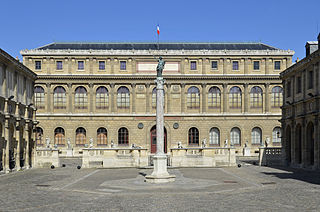
The Beaux-Arts de Paris is a French grande école whose primary mission is to provide high-level arts education and training. This is classical and historical School of Fine Arts in France. The art school, which is part of the Paris Sciences et Lettres University, is located on two sites: Saint-Germain-des-Prés in Paris, and Saint-Ouen.

The Académie des Inscriptions et Belles-Lettres is a French learned society devoted to history, founded in February 1663 as one of the five academies of the Institut de France. The academy's scope was the study of ancient inscriptions (epigraphy) and historical literature.

The Académie des Beaux-Arts is a French learned society based in Paris. It is one of the five academies of the Institut de France. The current president of the academy (2021) is Alain-Charles Perrot, a French architect.
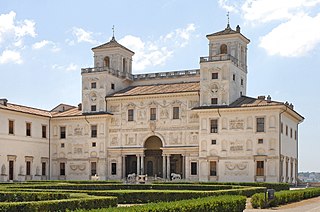
The French Academy in Rome is an academy located in the Villa Medici, within the Villa Borghese, on the Pincio in Rome, Italy.

Jean-François Pierre Peyron was a French Neoclassical painter, printmaker, and art collector.

Charles Thévenin was a neoclassical French painter, known for heroic scenes from the time of the French Revolution and First French Empire.

Merry-Joseph Blondel was a French history painter of the Neoclassical school. He was a winner of the prestigious Prix de Rome in 1803. After the salon of 1824, he was bestowed with the rank of Knight in the order of the Legion d'Honneur by Charles X of France and offered a professorship at the École nationale supérieure des Beaux-Arts: a position in which he remained until his death in 1853. In 1832, he was elected to a seat at the Académie des Beaux-Arts in Paris.

Louis Pierre Henriquel-Dupont was a French engraver. His students included Charles Bellay, Jean-Baptiste Danguin, Adrien Didier, Alphonse and Jules François, Adolphe-Joseph Huot, Achille and Jules Jaquet, Jules Gabriel Levasseur, Aristide Louis, Louis Marckl, Isidore-Joseph Rousseaux, Abel Mignon and Charles Albert Waltner.

Célestin-François Nanteuil-Lebœuf, known as Célestin Nanteuil, was a French painter, engraver and illustrator closely tied to the Romantic movement in France. He was born in Rome of French parents who were part of Joseph Bonaparte's entourage. Nanteuil entered the École des Beaux-Arts in 1827, where he studied under Eustache-Hyacinthe Langlois, and then worked in the studio of Dominique Ingres. In 1848, he was made Director of Académie des beaux-arts and later became the curator of the Musée des beaux-arts in Dijon. He died in Bourron-Marlotte at the age of 60. His elder brother, Charles-François, was a noted sculptor who won the Prix de Rome in 1817.

Théodore Richomme was a French engraver. A street in the 18th arrondissement of Paris is named after him.

Abel Mignon was a French artist and engraver. He engraved postage stamps for France, its colonies and for Czechoslovakia, as well as posters and currency. He studied at the Paris Académie des Beaux-Arts and was a Legion of Honour awardee.
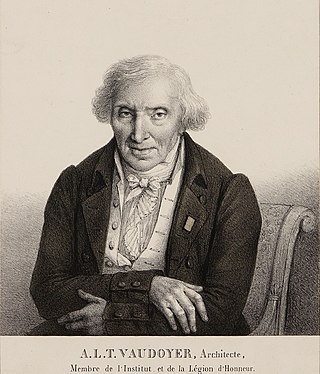
Antoine-Laurent-Thomas Vaudoyer was a French architect. He was married to Alexandrine-Julie Lagrenée, daughter of the painter, Louis Jean François Lagrenée. Their son, Léon, was also a well-known architect.
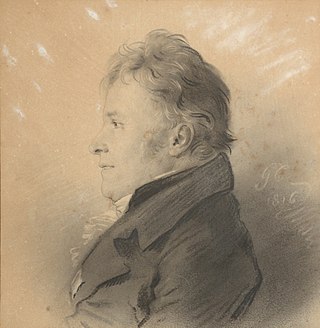
Jacques-Charles Bonnard was a French architect and engraver.

Émile-Jean Sulpis was a French engraver and designer.

Achille Jacquet was a French engraver.
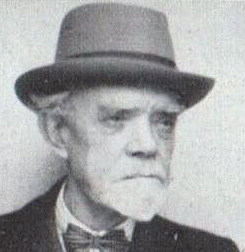
Jean-Émile Buland was a French painter, engraver, lithographer and illustrator.

Louis-Alexandre Bottée was a French engraver and medallist.
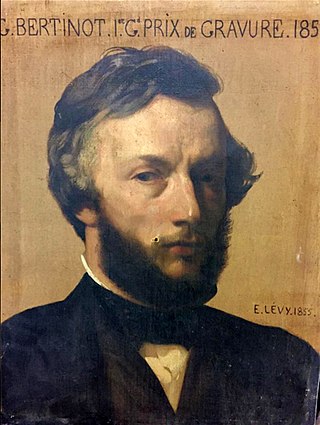
Gustave Nicolas Bertinot was a French engraver. He was primarily known for his intaglio work.
Nicolas de Poilly, also called Nicolas de Poilly the Younger, Nicolas de Poilly jeune, or Nicolas II de Poilly, was an academically trained French artist who won the Prix de Rome for painting in 1698. Despite an impressive start, he largely abandoned painting for drawing and became an engraver like his father, his uncle François de Poilly, and several others in the Poilly family.
![]() Media related to Achille Martinet at Wikimedia Commons
Media related to Achille Martinet at Wikimedia Commons